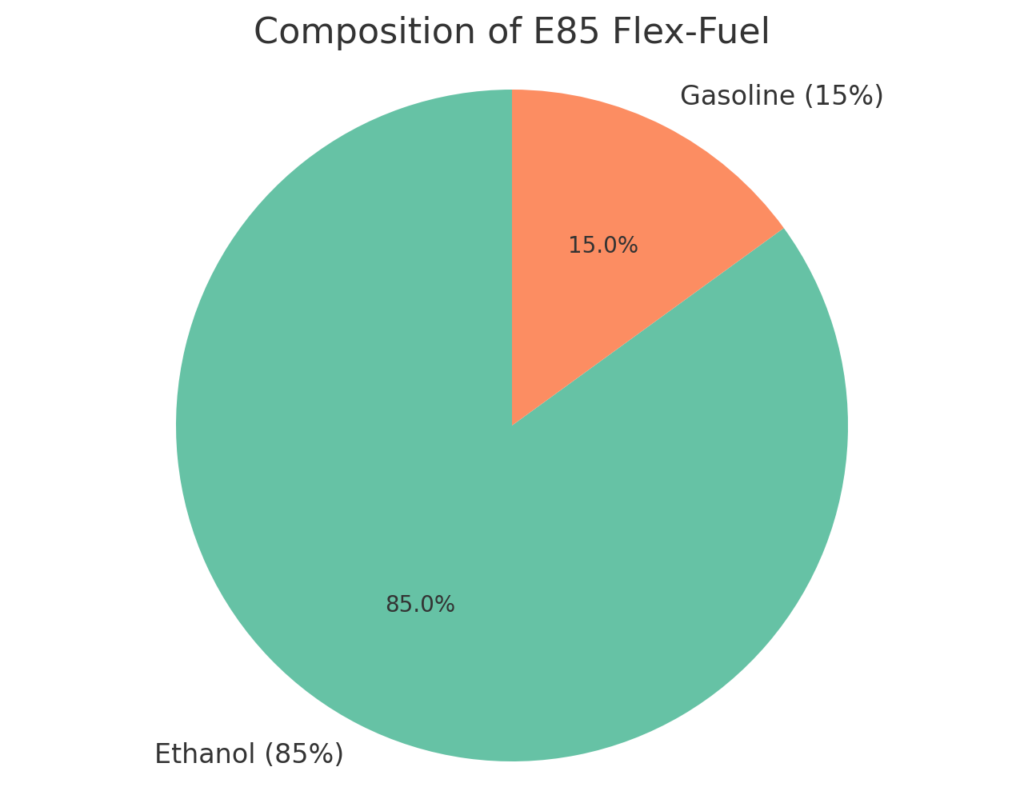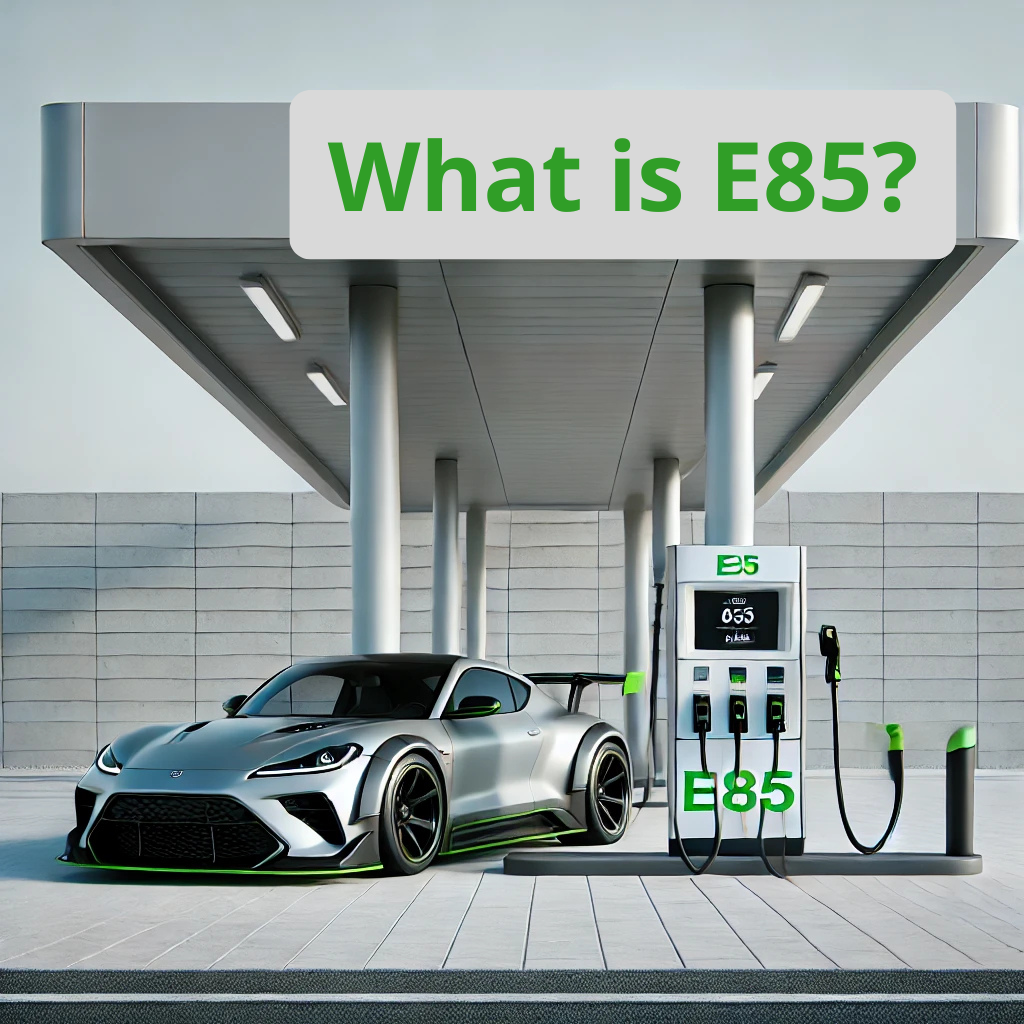In the quest for more sustainable and efficient energy sources, the automotive industry has explored various alternative fuels. One such fuel gaining attention is E85. But what is E85, and how does it impact vehicle performance, the environment, and fuel economy?
This comprehensive guide delves into the specifics of E85, its benefits, drawbacks, compatibility with vehicles, environmental implications, and its role in the future of transportation.
Introduction to E85
As the world grapples with the challenges of climate change and seeks ways to reduce carbon emissions, alternative fuels like E85 have emerged as potential solutions. E85 is part of a broader movement towards biofuels, which aim to provide more environmentally friendly options compared to traditional fossil fuels. Understanding E85 is essential for consumers, automotive enthusiasts, and environmental advocates alike.
What is E85?

E85 is a type of flex-fuel gasoline blend composed of up to 85% ethanol and 15% gasoline. The “E” in E85 stands for ethanol, a renewable fuel derived from plant materials such as corn, sugarcane, or other biomass. The remaining 15% is conventional gasoline, which provides the necessary energy density and combustion properties to complement the ethanol.
E85 is designed to be used in flex-fuel vehicles (FFVs), which are specifically engineered to handle varying ethanol concentrations. Unlike traditional vehicles, FFVs can seamlessly switch between E85 and regular gasoline, allowing drivers flexibility based on fuel availability and preference.
Composition of E85
Understanding the composition of E85 is crucial for appreciating its properties and how it differs from standard gasoline:
Ethanol
Ethanol is produced from renewable sources, making E85 a more sustainable fuel option. Ethanol typically has a higher octane rating than gasoline, which can enhance engine performance. Ethanol burns cleaner than gasoline, resulting in fewer carbon emissions.
Gasoline
Gasoline provides higher energy per unit volume, ensuring that E85 maintains sufficient fuel efficiency. The gasoline component ensures compatibility with existing engine technologies and maintains necessary combustion characteristics.
E85 vs. Traditional Gasoline
Comparing E85 to traditional gasoline highlights the key differences and considerations for drivers.
| Feature | E85 (85% Ethanol) | Traditional Gasoline |
|---|---|---|
| Composition | 85% ethanol, 15% gasoline | 100% gasoline |
| Energy Content | ~34% less energy per gallon | Higher energy density |
| Octane Rating | Higher octane rating (typically 100) | Standard octane rating (typically 87-93) |
| Fuel Economy | Lower due to reduced energy content | Higher fuel economy |
| Emissions | Lower greenhouse gas emissions | Higher greenhouse gas emissions |
| Cost | Often cheaper in regions with ethanol subsidies or local production | Variable, generally higher in regions without subsidies |
| Vehicle Compatibility | Requires flex-fuel vehicles (FFVs) | Compatible with all standard vehicles |
| Availability | Limited, especially outside regions with strong ethanol programs | Widely available in most areas |
How to Use E85
Finding E85 Stations
E85 availability is primarily concentrated in regions with significant ethanol production, such as the Midwest in the United States. To locate E85 stations:
- Use websites like Alternative Fueling Station Locator by the U.S. Department of Energy or apps like PlugShare can help find nearby E85 stations.
- Contact local fuel stations or ethanol producers can provide information on E85 availability.
Fueling Tips
- Only use E85 in flex-fuel vehicles or properly modified vehicles to prevent engine damage.
- Be aware of the reduced fuel economy when using E85 and adjust your fueling habits accordingly.
- Keep up with regular maintenance schedules to mitigate the increased wear associated with ethanol fuels.
Conclusion
E85, a blend of 85% ethanol and 15% gasoline, represents a significant step towards more sustainable and renewable fuel options in the automotive industry. While it offers notable environmental and economic benefits, such as reduced carbon emissions and support for agricultural sectors, it also comes with challenges like lower fuel economy, limited availability, and vehicle compatibility issues.
For drivers with flex-fuel vehicles or those willing to invest in modifications, E85 can be an effective alternative to traditional gasoline, contributing to a greener and more sustainable future. However, potential users should weigh the benefits against the drawbacks, considering factors like fuel availability, vehicle compatibility, and overall cost-effectiveness.
As technology advances and the push for renewable energy continues, E85 may play an integral role in diversifying the fuel landscape, complementing other alternative energy sources like electric and hydrogen fuels.
